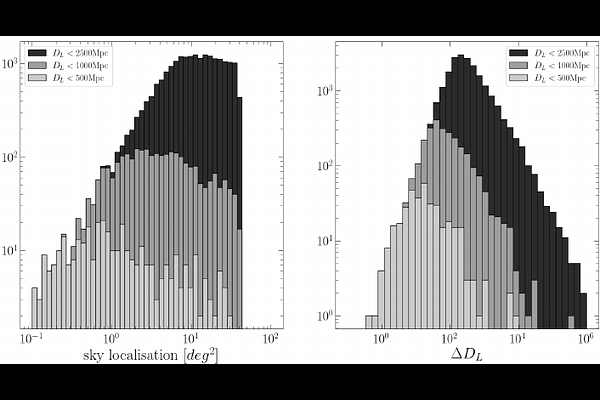Multi-messenger observations of binary neutron star mergers: synergies between the next generation gravitational wave interferometers and wide-field, high-multiplex spectroscopic facilities

Multi-messenger observations of binary neutron star mergers: synergies between the next generation gravitational wave interferometers and wide-field, high-multiplex spectroscopic facilities
S. Bisero, S. D. Vergani, E. Loffredo, M. Branchesi, N. Hazra, U. Dupletsa, R. I. Anderson
AbstractThird-generation gravitational wave (GW) observatories such as the Einstein Telescope (ET) and Cosmic Explorer (CE) will detect hundreds of thousands of binary neutron star (BNS) mergers, reaching redshifts beyond $z\sim3$. To fully exploit joint GW and electromagnetic (EM) detections, dedicated strategies and adapted EM facilities are essential. We investigate the role of Integral Field and Multi-Object Spectroscopy (IFS and MOS) with the Wide-field Spectroscopic Telescope (WST) on next generation GW multi-messenger (MM) observations. We consider simulations of BNS populations, their GW detections with ET(+CE), and their EM counterparts: kilonovae (KNe) and gamma-ray bursts (GRBs). We consider two strategies: one in synergy with wide-field photometric surveys, and a galaxy-targeted one exploiting WST high multiplexing. We estimate the number of galaxies in GW error volumes, and identify observational challenges and mitigation strategies. We find that WST can detect KNe up to $z\sim0.4$ and $m_{\mathrm{AB}}\sim25$, and GRB afterglows beyond $z>1$ for $\Theta_{\mathrm{view}}\lesssim15^\circ$. KN observations are best scheduled 12-24 hours post-merger. For poorly localised GRBs, WST IFS can aid the identification. Mini-IFUs and galaxy catalogues complete to $z\leq0.5$ are key to EM counterpart detection. Even at low $z$, the number of galaxies can be huge-thousands at $z<0.1$, tens of thousands at $z<0.2$. Events at $z<0.3$ with localisation $<10$deg$^{2}$ are golden cases for WST, requiring few exposures to target all galaxies. Detecting and characterising EM counterparts of BNS detected in the extended volume explored by next-generation interferometers will be challenging. We show that high-sensitivity, wide-field, high-multiplex spectroscopic facilities are powerful instruments to fully exploit the new multi-messenger science opportunities enabled by next generation GW detectors.